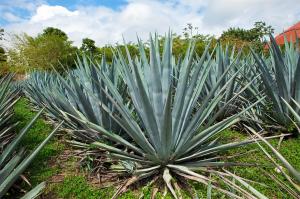How Do Pitcher Plants Get Water?
Pitcher plants are carnivorous plants that grow in nutrient-deficient soils. To compensate for the lack of nutrients in their environment, these plants evolved to capture and digest insects so that they can extract the necessary nutrients to survive. But how do pitcher plants carry out their carnivorous lifestyle while also getting the water they need to survive?
The Anatomy of Pitcher Plants
Pitcher plants have a unique anatomy that allows them to capture and digest insects while also collecting water. The leaves of pitcher plants are modified into a deep, narrow cavity called a pitcher. This pitcher is filled with digestive fluids and is covered with a slippery surface that insects cannot grip or climb. When an insect lands on the surface of the pitcher, it falls into the digestive fluid and is slowly digested by the plant.
The bottom of the pitcher is lined with cells that secrete mucilage, a sticky material that helps to capture insects. The walls of the pitcher are also coated with waxy substances that prevent water from escaping. These adaptations allow pitcher plants to collect and digest insects while also conserving water.
Water Collection in Pitcher Plants
Pitcher plants are typically found in wetland habitats where there is an abundance of water. However, even in these environments, water can be scarce at times, especially during dry seasons. To ensure their survival, pitcher plants have developed several mechanisms to collect and retain water.
One of the main ways pitcher plants collect water is through rain. The shape of the pitcher is designed to capture rainwater and funnel it towards the base. Once the water reaches the bottom of the pitcher, it is absorbed by the plant's roots, which branch out throughout the soil surrounding the plant.
In addition to collecting water from rain, pitcher plants can also collect dew. The slippery surface of the pitcher makes it difficult for dew droplets to escape, so they collect on the surface and slide down towards the base of the pitcher. Once the droplets reach the bottom, they are absorbed by the roots of the plant.
The Role of the Roots in Water Uptake
The roots of pitcher plants play a crucial role in water uptake. Because the soil surrounding pitcher plants is often nutrient-deficient, the roots of these plants have adapted to obtain nutrients and water from the trapped insects they digest. When a pitcher plant digests an insect, it releases amino acids, sugars, and other nutrients into the digestive fluid that the roots can absorb.
In addition to extracting nutrients from the digestive fluid, the roots of pitcher plants also absorb water. The roots are densely packed with small hairs called root hairs, which increase the surface area of the roots and allow for more efficient absorption of water from the soil.
Conclusion
Pitcher plants have evolved a unique set of adaptations that allow them to capture and digest insects while also conserving water. The anatomy of the pitcher, the collection of rainwater and dew, and the role of the roots in water uptake all contribute to the survival of these fascinating carnivorous plants in nutrient-deficient environments.

 how many times do yo...
how many times do yo... how many planted tre...
how many planted tre... how many pine trees ...
how many pine trees ... how many pecan trees...
how many pecan trees... how many plants comp...
how many plants comp... how many plants can ...
how many plants can ... how many plants and ...
how many plants and ... how many pepper plan...
how many pepper plan...





























